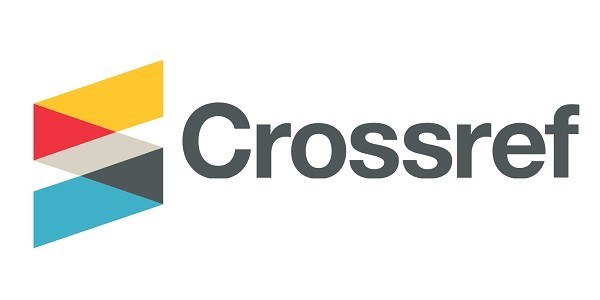Friendship and Personality Toward the Main Character in Wendy Mass’ The Candymakers
DOI:
https://doi.org/10.56326/jlle.v2i2.2143Keywords:
Friendship, Personality, Social Approach, NovelAbstract
The aims of the research are to find out the friendship and personality through the characters in the novel and to describe the impact of personality that affect their friendship towards the characters. The research applied the library research to get as many data from the novel and some books containing theories which connect to the research. The primary data was taken from The Candymakers by Wendy Mass. The writer used a qualitative descriptive research by using sociological approach and the theory of Aristotle for friendship and Neo-Freud’s theory of personality. The result shows the result of this study the types of friendship dominated by Virtuous/ Admiration because became a guide in made a friend. The types of personality in this study dominated by Aggressive personality but the impact that affect their friendship it would be Detached personality because solve the problem of friendship.
References
Abrahams, R. D., & Bauman, R. (1971). Speech Behavior and Decorum In A Caribbean Community 1. American Anthropologist, 73(3), 762-772. DOI: https://doi.org/10.1525/aa.1971.73.3.02a00160
Asfar, A. M. I. T., Asfar, A. M. I. A., & Halamury, M. F. (2019). Teori Behaviorisme. Makasar: Program Doktoral Ilmu Pendidikan. Universitas Negeri Makassar.
Bin Tahir, S. Z. (2015). Multilingual Behavior of Pesantren IMMIM Students in Makassar. Asian EFL Journal, 86, 45-64.
Bock, K., Levelt, W., & Gernsbacher, M. A. (2002). Language Production: Grammatical Encoding. Psycholinguistics: Critical Concepts in Psychology, 5, 405-452.
Buss, A. H. (2014). Social Behavior and Personality (Psychology Revivals). Routledge. DOI: https://doi.org/10.4324/9781315738567
Chaer, Abdul. (1994). Pengantar Semantic Bahasa Indonesia. Jakarta. Rineka Cipta.
Edition, F., & Carrol, D. W. (2008). Psychology of Language. New York.
Effendy, O. U. (1986). Dinamika Komunikasi. Yogyakarta: Remadja Karya.
Gunawan, I. (2013). Metode Penelitian Kualitatif. Jakarta: Bumi Aksara.
Helgadottir, F. D., Menzies, R. G., Onslow, M., Packman, A., & O'Brian, S. 2(014). Safety Behaviors and Speech Treatment for Adults Who Stutter. Journal of Speech, Language, and Hearing Research, 57(4), 1308-1313. DOI: https://doi.org/10.1044/2014_JSLHR-S-13-0041
Ji, Y., Wei, J., Zhang, J., Fang, Q., Lu, W., Honda, K., & Lu, X. (2017). Speech Behavior Analysis by Articulatory Observations. Procedia computer science, 111, 463-470. DOI: https://doi.org/10.1016/j.procs.2017.06.048 .
Maydiantoro, A. (2022). Teori Belajar Behavioristik. FKIP Universitas Lampung: Bandar Lampung.
McGuigan, F. J., & Dollins, A. B. (1989). Patterns of Covert Speech Behavior and Phonetic Coding. The Pavlovian Journal of Biological Science, 24(1), 19-26. DOI: https://doi.org/10.1007/BF02964527
Meyer, C. F. (2010). Introducing English Linguistics International Student Edition. England: Cambridge University Press.
Mohammadzaheri, F., Koegel, L. K., Rezaee, M., & Rafiee, S. M. (2014). A Randomized Clinical Trial Comparison Between Pivotal Response Treatment (PRT) and Structured Applied Behavior Analysis (ABA) Intervention For Children With Autism. Journal of Autism and Developmental Disorders,44(11), 2769-2777. DOI: https://doi.org/10.1007/s10803-014-2137-3
Morris, E. K. (2007). Skinner, BF (Burrhus Frederic). The Blackwell Encyclopedia of Sociology. DOI: https://doi.org/10.1002/9781405165518.wbeoss335
Nahar, N. I. (2016). Penerapan Teori Belajar Behavioristik Dalam Proses Pembelajaran. NUSANTARA: Jurnal Ilmu Pengetahuan Sosial, 1(1).
Pronovost, W., Wakstein, M. P., & Wakstein, D. J. (1966). A Longitudinal Study of The Speech Behavior And Language Comprehension. Exceptional Children. 33(1), 19-26. DOI: https://doi.org/10.1177%2F001440296603300104
Roane, H. S., Fisher, W. W., & Carr, J. E. (2016). Applied Behavior Analysis As Treatment for Autism Spectrum Disorder. The Journal of Pediatrics, 175, 27-32. DOI: https://doi.org/10.1016/j.jpeds.2016.04.023
Robinson, P., & Ellis, N. C. (Eds.). (2008). Handbook of Cognitive Linguistics and Second Language Acquisition (270). New York: Routledge.
Wiratno, T., & Santosa, R. (2014). Bahasa, Fungsi Bahasa, dan Konteks Sosial. Modul Pengantar Linguistik Umum, 1-19. Yogyakarta: Pustaka Pelajar.
Wolters, N., Knoors, H., Cillessen, A. H., & Verhoeven, L. (2014). Behavioral, Personality, and Communicative Predictors of Acceptance and Popularity in Early Adolescence. The Journal of Early Adolescence, 34(5), 585-605. DOI: https://doi.org/10.1177/0272431613510403
Downloads
Published
How to Cite
Issue
Section
License
Copyright (c) 2022 Mardiana Mardiana, Dahlia D. Moelier, Asyrafunnisa Asyrafunnisa

This work is licensed under a Creative Commons Attribution 4.0 International License.










